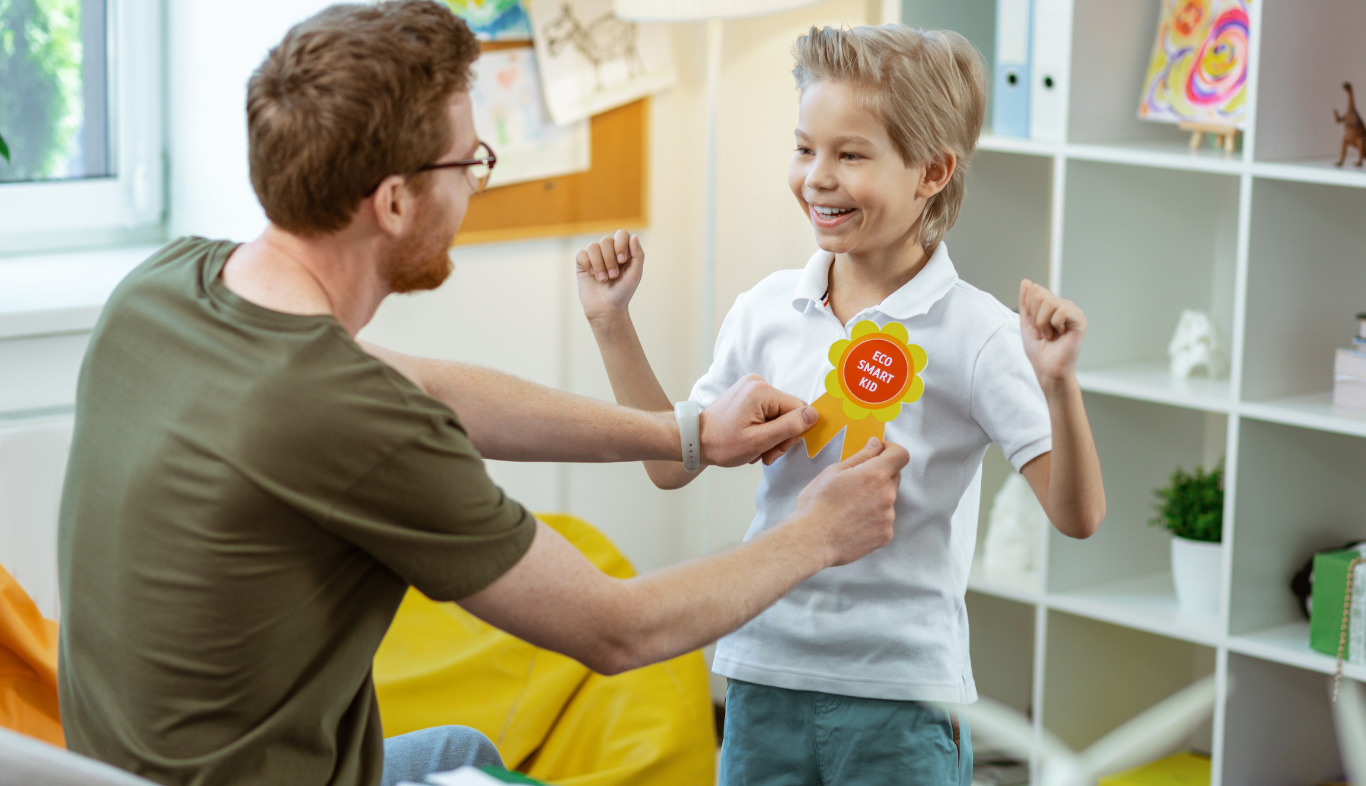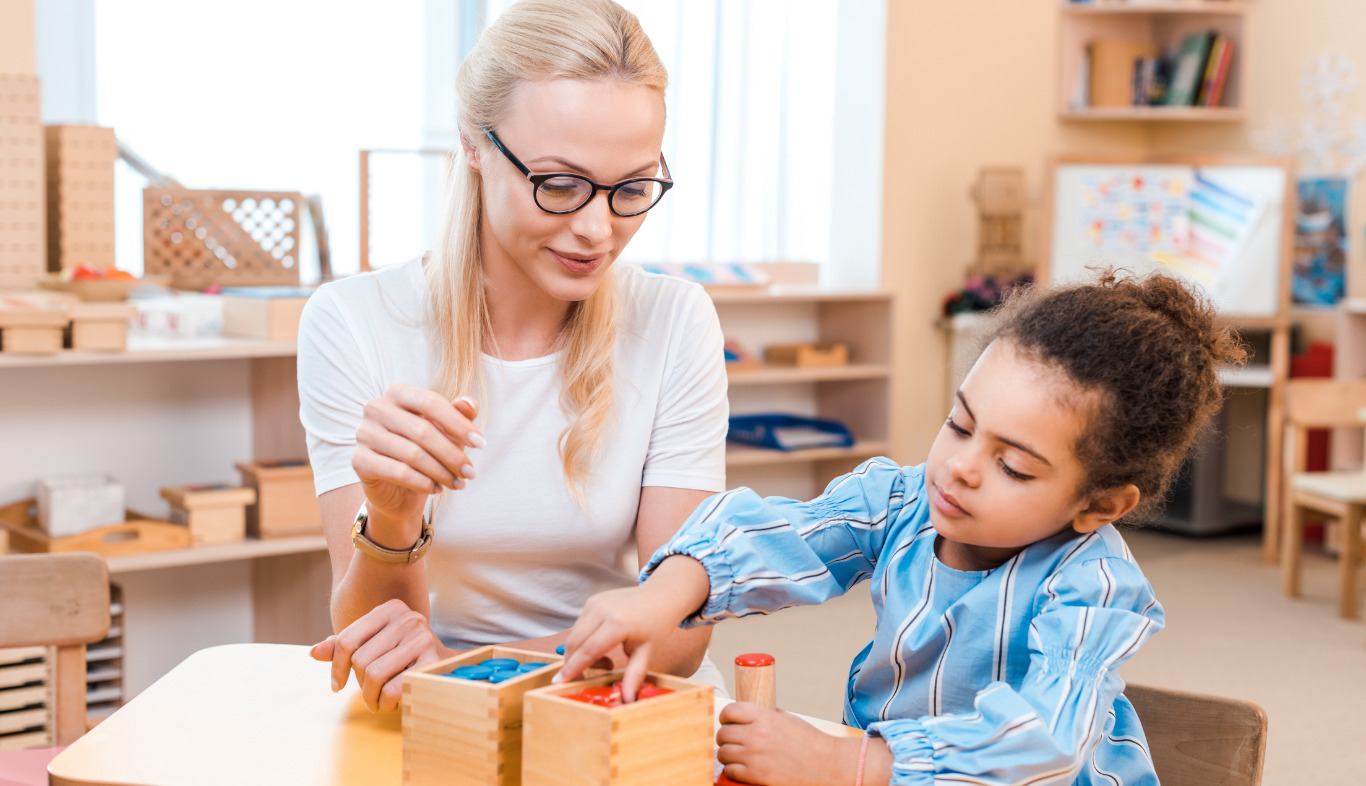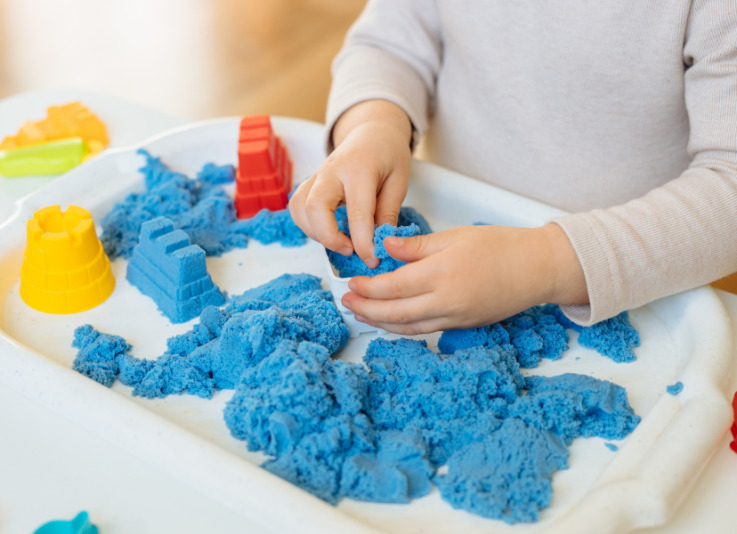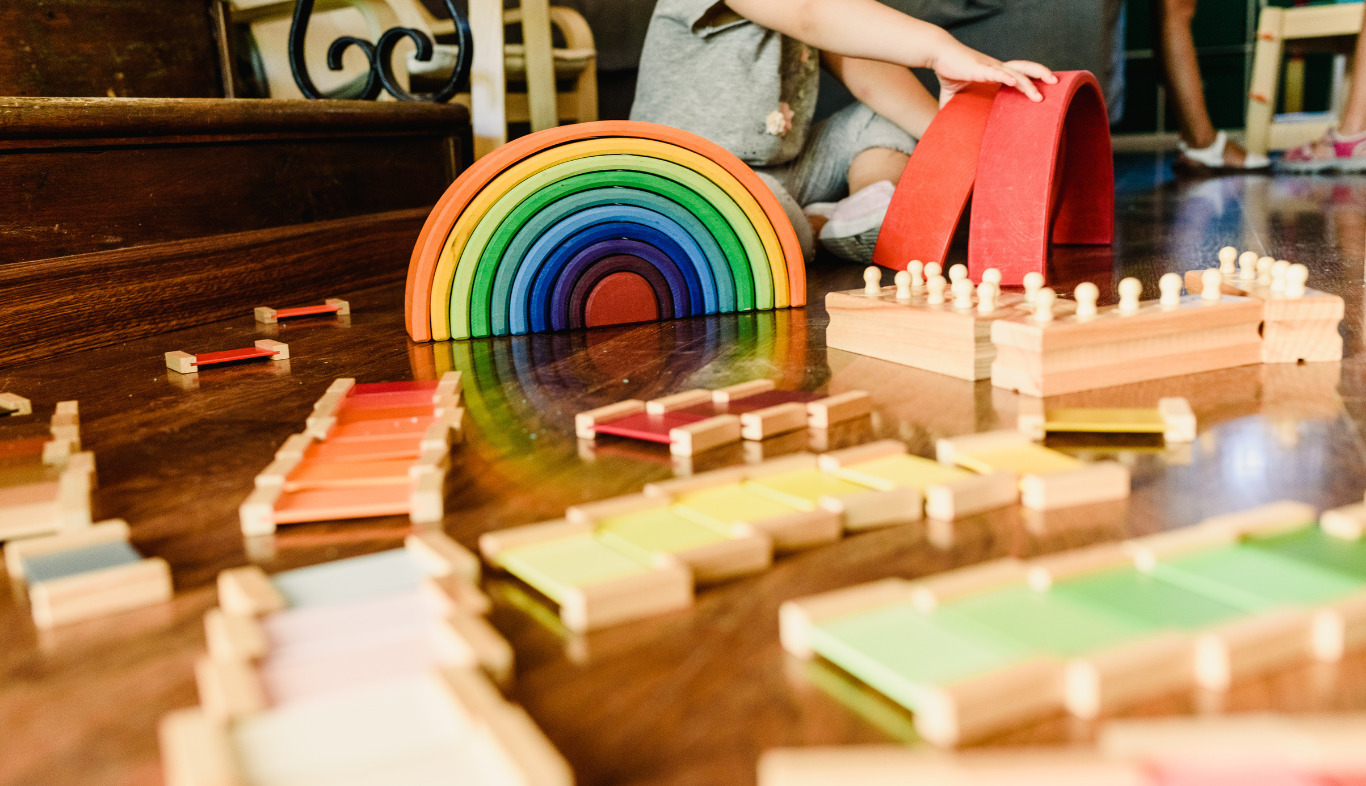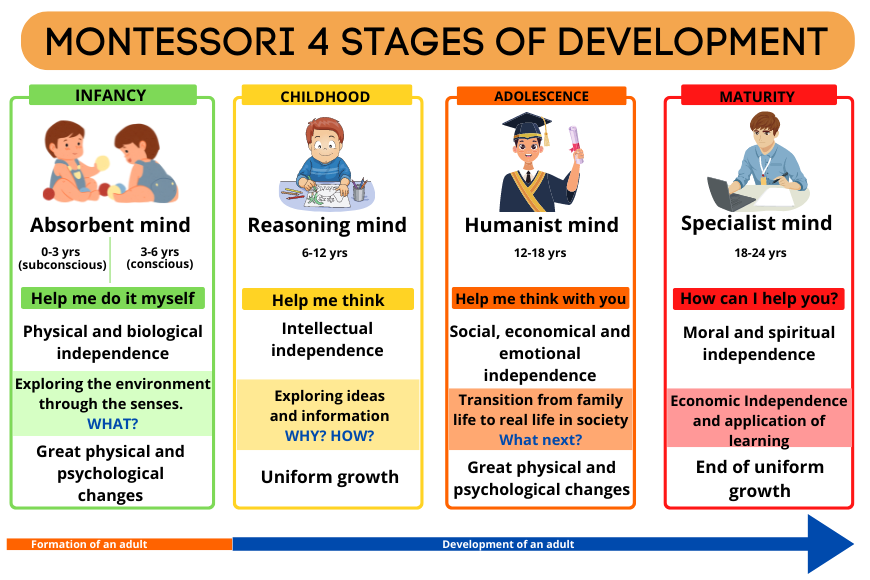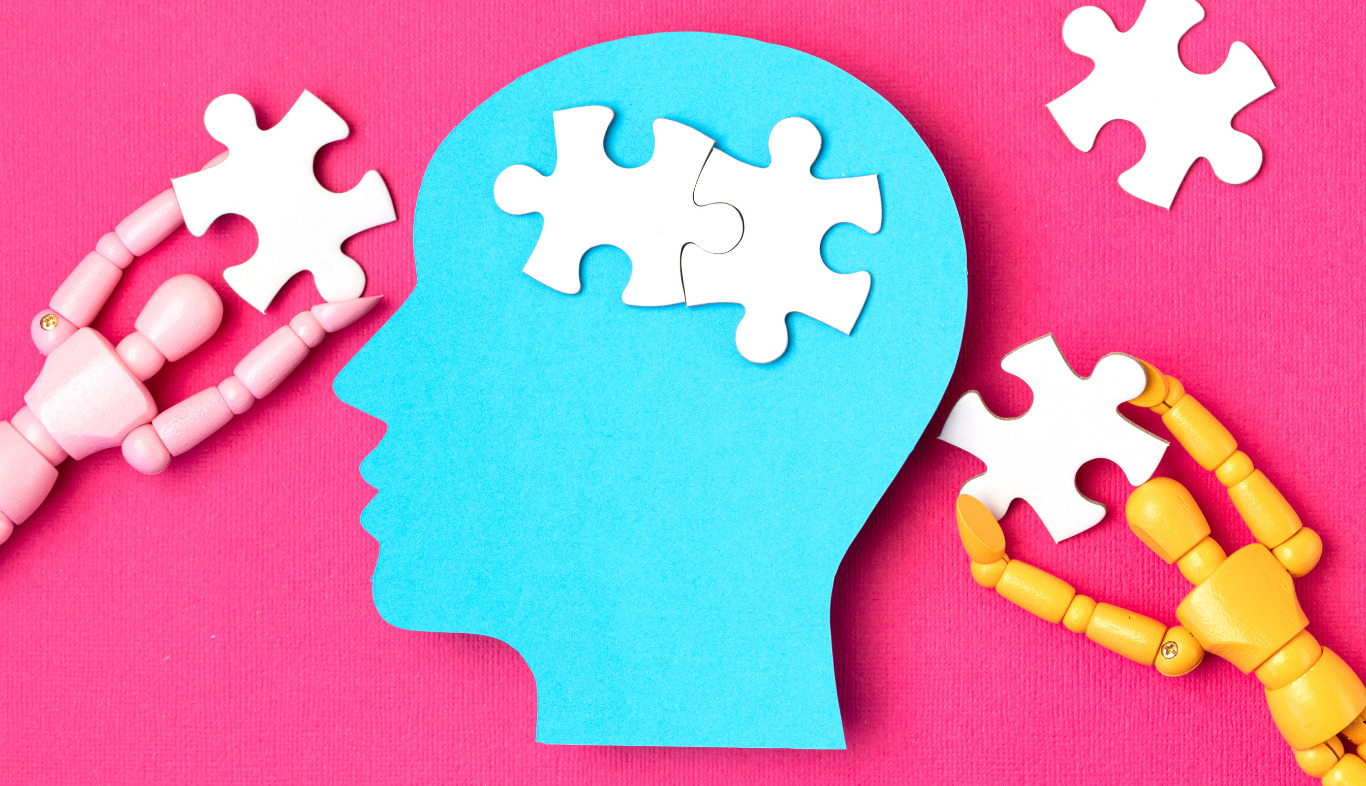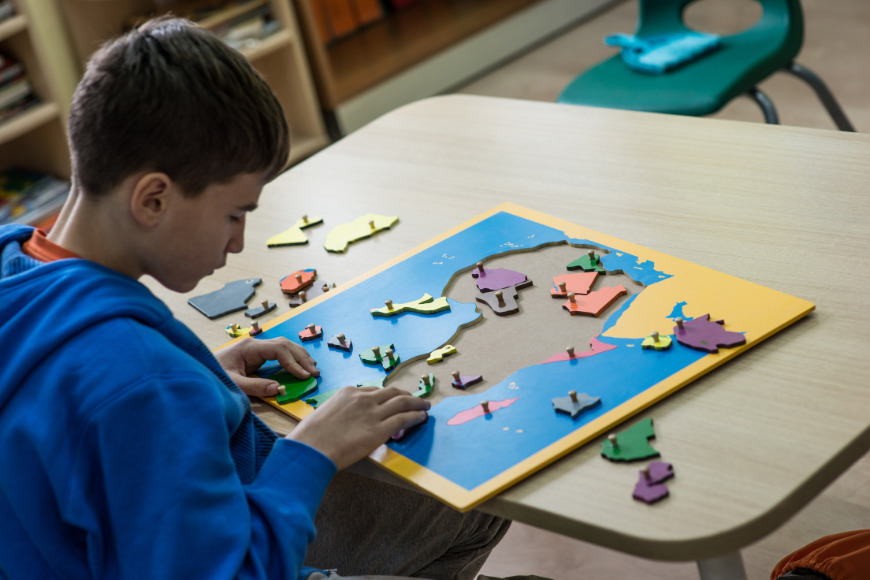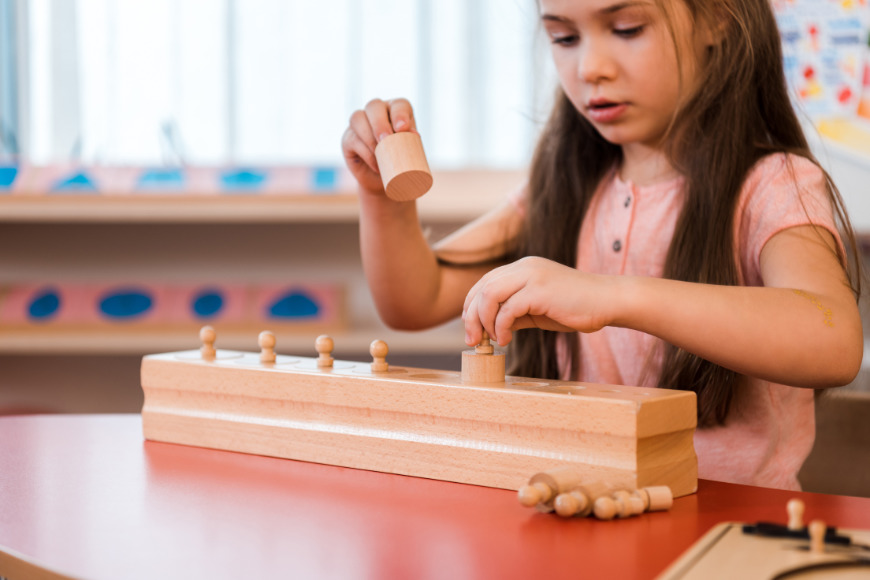Several pedagogical models of early childhood education are practiced in schools within the United States. Providing meaningful and hands-on learning experiences for all students has been a concern long before standardized assessments became the norm. Scholars have extensively researched on effective ways in which children learn, acquire, analyze, and process information.
The constructivist approach to early childhood education is one such philosophical approach, which includes pedagogical models such as Montessori, Waldorf (aka Steiner), and Reggio Emilia. These models emphasize and assess social and emotional skills through observation, as opposed to quantitative standardized tests. As indicated, the Montessori Method is one such example of a constructivist education model, and it has strong research-based evidence to support its effectiveness in academic achievement and overall well-being of children (Dhiksha & Suresh, 2016; Lillard, 2005, 2017; Lillard et al, 2021; Mallett & Schroeder, 2015; Marshall, 2017).
How does the Montessori Method help in the Academic Achievement and Well-being of Children?
More than 100 years of extensive research have demonstrated that the Montessori Method affords children better academic achievement and adult well-being as compared to other traditional or conventional models of education.
Through observation of children over her lifetime, Dr. Maria Montessori developed an understanding of child development and learning processes within children. Through these observations, she prepared an environment with development-based activities for children that promote independent learning. Such an environment not only stimulates the child’s natural development but also develops their problem-solving and critical-thinking abilities. One of the strengths of Montessori education is the child-centered approach in the classrooms. This allows children to learn by doing and become independent learners. This kind of methodology encourages children to master skills and achieve success.
A multitude of educational ideas is used by the Montessori Method, which also offers the foundation to put these ideas into practice. Numerous children have grown into successful, well-adjusted adults through a Montessori education.
Montessori Educational Opportunities and Outcomes
Standardized school assessments seek to quantitatively measure children’s academic achievement. The effectiveness and accuracy of these measures have been contentious and controversial since their inception. Conventional early childhood education programs are generally teacher-directed classrooms, where teachers are “on stage” presenting concepts and information for students to consume and acquire. The exams raised concerns about how to teach students who did not excel in them. However, there are still other methods of setting up the classroom that will allow all students to learn intuitively.
The Montessori method is one of those methods, where the curriculum delivers a quality program that involves the overall development of the child, be it social, emotional, cognitive, or kinaesthetic, and embraces the potential for significantly improving the academic outcomes.
The first longitudinal study of Montessori education outcomes led by Dr. Angeline Lillard et al., 2017 found that children in Montessori preschools demonstrate better academic performance and social understanding than children participating in a conventional method of education. Another study, conducted by Jane C. Manner (1999), mentions the Stanford Achievement Test whose findings indicates that Montessori students continued to produce higher mean scores in reading and mathematics than did the traditional education students.
Why Montessori Children’s Results are Better When Compared to Conventional Education Methods?
“Montessori education fosters social and academic skills that are equal or superior to those fostered by a pool of other types of schools.” as stated in research by Dr. Angeline Lillard.
The Montessori Method has taken a leap to prepare the blending of visual and auditory representations, which is crucial for successful reading. Significant progress has also been made in illuminating the brain mechanisms behind early reading and reading challenges.
To overcome these reading challenges, the Montessori Method of education introduces phonics. It is one of the well-researched and best foundational techniques of language development. Through phonics, it becomes easier for a child to understand and decipher the alphabet-sound code.
The use of phonics helps the children to read with the correct pronunciation of the letters, digraphs, blends, and phonemes. An article by Chloë Marshall states, “in the Montessori method, the letter-sound relationships are taught in an organized sequence, rather than being taught on an ad hoc as-and-when-needed basis (2017). The article also states that “the core of the Montessori curriculum is clear instruction of phonics within a rich language context, both spoken and written. The children are taught the sound-letter code before using it to encode words (in spelling) and decode them (in reading).
In addition to phonics and language acquisition, mathematics is also a strength of Montessori education. Montessori materials help children to understand math concepts in a more tangible manner. Developmental progression is used to ensure that math instructions are built on the learning capabilities of each individual child.
For instance, to introduce complex topics like combining and sorting of shapes, the child is first acquainted with Montessori sensorial materials like constructive triangles or geometric solids, or geometric cabinets. Activities with these resource materials help children recognize, name, and compare shapes effortlessly.
Similarly, to let the child comprehend mathematical concepts like addition and subtraction, materials like number rods, cards, counters, and spindle boxes are available in Montessori classrooms. Along with the sensorial materials, practical life activities like cutting fruits, folding clothes, and more such tasks are used in the Montessori classroom to introduce mathematical concepts like that of fractions.
The same thing is mentioned in research by Chloë Marshall. Marshall (2017) indicates that the use of practical life materials in Montessori classrooms to support the development of fine motor skills is a dynamic approach. The Montessori approach to reading using phonics, embedded in a rich language context, and giving math instruction a sensorial foundation are effective approaches to make a child enjoy learning which is not often present in conventional classrooms.
Mention of Academic Achievements of Montessori Children in a Research
The longitudinal study by Dr. Angeline S. Lillard and colleagues (Lillard et al., 2017) also states that an educational method that focuses on the overall development of the child rather than grades produces responsible, creative, and mature adults.
Across a range of abilities, children at Montessori schools outperformed the children in traditional education. Some of the differences that the team noticed through their research included:
- The children of Montessori schooling were significantly more creative and sophisticated.
- There was a significant difference with regard to the social and emotional behavior of the children of the same age groups.
- Children who attended Montessori schools demonstrated a sense of being reasonable, honest, and justified during interactions. They had a more emotionally positive approach.
- Montessori-educated children performed better in reading, spelling, grammar, and punctuation when compared to those who participated in conventional education.
Montessori education keeps children at the center of learning (student-centered learning). These unique points help Montessori students to perform well and demonstrate a mastery of various subject matters. To learn about Montessori education and how it differs from conventional education, please read our blog on this topic.
How does Montessori Education helps in the Socio-Emotional Wellbeing Of children?
We have so far explained the academic achievement of Montessori children and how it benefits the child’s development. It is interesting to know that the Montessori Method of education not only focuses on academics, but also on the social and emotional well-being of children.
The Montessori education model allows children to learn at their own pace. It focuses on educating the child as a whole. This gives children the freedom to gradually develop and master new skills and strengths, which in turn promotes personal independence, self-discipline, and better emotional stability. It also fosters interactions between the child with peers and the environment along with the development of democratic attitudes and values among people.
The children in the Montessori model perceived the positive impact of collaboration and group work, and this is found to be positively associated with heightened levels of self-efficacy and better emotional development as stated in a research by Dhiksha. J and Suresh A. The Montessori method of learning is based on experimental and exploring concepts. Self-correction and self-assessment are integral parts of the daily routine in Montessori classrooms. Hence, the students are open to criticism and corrections as they learn through errors. This teaches the children a lifelong practical lesson.
The research reveals that children who have high self-esteem, better social-emotional stability, and the capacity to interact well among people, are found to be more likable and attractive. They make better impressions on others.
In the Montessori Method, each child is considered unique and is given enough space to unleash the total potential of the child. It encourages independent learning, active exploration, and choice-making to enhance a child’s intellectual, physical, emotional, and social development.
Final Words
The Montessori Method of education is a pedagogical model that has been researched extensively and meticulously for more than a century. The above-mentioned evidence from rigorous studies regarding Montessori education is almost exclusively positive regarding the academic achievement of children. These studies have logically compared Montessori to other models of education.
These studies have also mentioned about the benefits of uninterrupted work periods in Montessori education that enhance the focus, attentiveness, discipline, and social and emotional skills in the children. Together, it provides better academic achievements and the well-being of children.
References
- Dhiksha, J., & Suresh, A. (2016). Self-esteem and academic anxiety of high school students with Montessori and traditional methods of education. Indian Journal of Health and Wellbeing, 7(5), 543–545.
- Lillard, A. S. (2005). Montessori: The science behind the genius (1st ed.). Oxford University Press.
- Lillard, A. S. (2017). Montessori: The science behind the genius (3rd ed.). Oxford University Press.
- Lillard, A. S., Heise, M. J., Richey, E. M., Tong, X., Hart, A., & Bray, P. M. (2017). Montessori preschool elevates and equalizes child outcomes: A longitudinal study. Frontiers in Psychology, 8, Article 1783. https://doi.org/10.3389/fpsyg.2017.01783
- Lillard, A. S., Meyer, M. J., Vasc, D., & Fukuda, E. (2021). An association between Montessori education in childhood and adult wellbeing. Frontiers in Psychology, 12, Article 721943. https://doi.org/10.3389/fpsyg.2021.721943
- Mallett, J. D., & Schroeder, J. L. (2015). Academic achievement outcomes: A comparison of Montessori and non-Montessori public elementary school students. Journal of Elementary Education, 25(1), 39-53. http://pu.edu.pk/images/journal/JEE/PDF-Files/3_v25_no1_15.pdf
- Manner, J. C. (1999). A Comparison of Academic Achievement of Montessori and Non-Montessori Students in a Public School Setting [Doctoral Dissertation (Ed.D.), Florida International University]. https://digitalcommons.fiu.edu/dissertations/AAI9946898/
- Marshall, C. (2017). Montessori education: a review of the evidence base. NPJ Science of Learning, 2(1), Article 11. https://doi.org/10.1038/s41539-017-0012-7
- Salazar, M. M. (2013). The impact of Montessori teaching on academic achievement of elementary school students in a central Texas school district: A causal-comparative inquiry [Doctoral dissertation, Texas A&M University]. http://hdl.handle.net/1969.6/515
Sensory Integration Strategies That Work Well For Children Who Attend Montessori School
In recent years, sensory integration has become a part of an important discussion in education. But it is talked about more frequently since the pandemic 2019 hit and outdoor time and the active play of children have declined dramatically. The majority of children spend more time watching screens than experiencing the world through their senses. Resulting in a varied range of sensory disorders.
To overcome this problem, schools in America and parents must identify, assess and diagnose sensory-sensitive needs in children and provide the necessary aid to address those needs.
What is Sensory Integration?
Sensory integration (SI) theory was developed by Dr. A. Jean Ayres in the mid-70s. According to this theory, we usually perceive that we have 5 senses – touch, smell, sight, hearing, and taste. But actually, we have seven senses. The other two are vestibular and proprioceptive. The vestibular sense is related to the body and movement; whereas the proprioceptive sense gathers information through muscles, bones, and joint movements. All 7 senses supply sensory information to the brain.
This information is then prioritized and organized to respond adaptively (Noddings, 2017a) has stated that Author Alicia Noddings references Carolyn Cantu’s article about stress management and self-regulation (2002). In this article about self-regulation and stress management, Cantu indicates that over 80% of the nervous system processes sensory information. This, in turn, enhances awareness and organizes the brain program, which affects perception, cognition, and knowledge.
Simply put, sensory integration encapsulates how we experience, interpret, and react to (or ignore) information coming from our senses. It is important in all the things that we need to do on a daily basis, such as getting dressed, eating, moving around, socializing, learning, and working.
Montessori education is well known to inculcate sensory integration in the classroom setting by providing a developmentally appropriate environment, tools, and multi-layered sensory opportunities to address the needs of children who are developing their senses – sensory sensitivity.
Importance of Sensory Integration Strategies
The use of intentionally designed materials, the use of senses, and the incorporation of movements in a rich sensory environment benefit the children in four main ways:
- Increased ability to focus on relevant materials in different environments. Children tend to learn best and retain information when the senses are engaged in activities.
- Reduced rate of self-injuries. It also calms an anxious or frustrated child as their senses get engaged in a different environment.
- General improvement of the nervous system results in higher cognitive activity; such strategies and tools help children become more perceptive, aware, and logical.
- Broaden and refine the senses. Once a child gets involved in various sensory tools, they develop their senses on a broader path; they also learn to interact socially.
How Does Montessori Education Help in Promoting Sensory Integration Among Children?
It was Maria Montessori’s belief that the first six years of a child’s life are foundational years when children experience rapid growth. In these years, intellectual development happens at a fast pace, while sensorial integration fosters and nourishes this development.
Dr. Montessori also referenced reflecting on the environment when looking at the cause of challenging behaviors in the classroom. Children’s behaviors, both good and bad, are a communication from the child (Granke, 2007: 231-243). For trained teachers, observing and reflecting on behaviors in the classroom can provide guidance for how to meet the individual needs of each child.
Montessori Education and Sensory Integration Strategies
According to Jennifer Hoyt’s Sensory Integration Materials in Montessori Classrooms, Montessori methods provide enough space for the movement of learning through the senses. When an educator adds enough sensorial materials in a classroom, it proves beneficial for the children to meet their varied needs.
In traditional classrooms, every child’s learning capabilities are treated the same. The educator just directs all the children in the same manner. In such an environment, some children may get confused with the resources and materials and lose interest. On the other hand, in a Montessori classroom, the environment is based on the interests and developmental stage of the child, enabling them to explore at their own pace. In such an environment, a child gets the proper space and materials to thrive and hone their skills to their full potential.
The Outcomes of Sensory Integration in the Montessori Curriculum
The Montessori Method incorporates sensory integration to meet the developmental needs of every child through various activities, such as sensorial and practical life lessons. These kinds of opportunities help develop manipulative skills, eye-hand coordination, and creative thinking skills.
Children can engage in a variety of these activities inside the classroom, and when appropriate, they can also be carried out outside. The purpose of adopting sensory integration strategies is to assist the children in being alert enough to concentrate on their learning.
Benefits of Sensory Integration to the Child Who Attends the Montessori School
Following are the Benefits of Sensory Integration Inside the Montessori Classroom:
- Executive Functioning: Montessori education helps children develop a chief executive function that increases periods of concentration and working memory. It helps children to solve complex problems by implementing reasoning and excellent planning skills independently.
- Eye-hand coordination: Montessori activities such as knobbed cylinders, transferring activities, sewing, etc. help children to develop better eye-hand coordination.
- Motor Skills: Montessori curriculum has varied activities that help in developing both fine motor and gross motor skills. These activities further develop prehension (ability to use the thumb against the fingers functionally), bimanual coordination (ability to use the two hands together in a functional manner), and midrange control (ability to control a movement throughout the full excursion).
- Discrimination and order: The sensorial activities in the Montessori curriculum help children broaden and refine the child’s senses. Every activity from the pink tower to thermic tablets to mystery bags, help children with discrimination and order. It also helps them become more logical, perceptive, and aware.
- Perceptual and Cognitive Skills: Montessori activities help children recognize the differences between varied sizes, weights, and volumes. They have an understanding and concrete experience of a continuum or range.
Benefits of Sensory Integration Outside the Classroom in the Montessori School
Noddings, A. (2017) has described in the research ‘When sensory sensitivity requires intervention: Assessment and treatment of sensory-sensitive children’ that a few movement activities like jumping, yoga, and wall push-ups are beneficial to improve sensory integration and can be incorporated into day-to-day Montessori classrooms.
An easy way to promote sensory integration is to allow enough space for the child for frequent moves. These activities help in channelizing the senses of the child, and in building gross motor skills.
Montessori education also promotes going out on excursions, music, dance, physical exercise, arts, etc. to support the needs of diverse children. Children naturally fidget interest in the work and develop patience, persistence, resilience, and problem-solving ability. Sensory integration works best when varieties of movement opportunities are available along with the tools.
What Else Can Be Included in The Montessori Classroom for Sensory Integration?
In addition to the resources used in Montessori Classrooms, many more activities and tools can be included for the children. These can be placed over a ‘sensory shelf’ for precise learning. Small fidgets, stretch/resistance bands, and squeeze balls of varying textures and firmness levels are hand-held tools that can be helpful for the child in channelizing the senses.
Some large-scale tools such as hopper balls, hanging bars, mini trampolines, or balance boards can be incorporated into the classroom. These can be used by individual children or they can be used in groups.
Noise-cancellation headphones, colored glasses, clay dough, ankle/wrist weights, and heavy lifting are some resources that can aid children in integrating their senses.
Final Words
The relationship between the child and their environment is significant. Children should be effectively and genuinely introduced to the learning materials or ideas they are attempting to master. Therefore, Montessori classrooms are ideal for encouraging sensory integration (SI) at a young age; they provide an optimal opportunity for children to attain the best results in their overall development.
References
- Cantu, C. O. (2002, November). Self-regulation and stress management. The Exceptional Parent 32(11), 41–47.
- Dunn, W. (2001). The sensations of everyday life: Empirical, theoretical, and pragmatic considerations. The American Journal of Occupational Therapy, 55(6), 608-620. https://doi.org/10.5014/ajot.55.6.608
- Granke, J. (2007). Doors of perception: Sensory integration for Montessori classrooms. The NAMTA Journal, 32(1), 231-243.
- Hoyt, J. (2018). Including sensory integration materials in a Montessori classroom to improve behavior outcomes [Master’s Thesis (M.S. Ed.), University of Wisconsin–River Falls]. https://amshq.org/-/media/Files/AMSHQ/Research/Action-Research/Including-Sensory-Integration-Materials-in-a-Montessori-Classroom-to-Improve-Behavior-Outcomes.ashx
- Luborsky, B. (2014). Occupational therapy and Montessori – kindred spirits: Moving towards a scientific and medical pedagogy. The NAMTA Journal, 39 (3). https://files.eric.ed.gov/fulltext/EJ1183213.pdf
- Noddings, A. (2017a). Supporting sensory-sensitive children in a sensory-intensive world. Montessori Life, 29(1), 34–39. https://amshq.org/About-Montessori/Montessori-Articles/All-Articles/Supporting-Sensory-Sensitive-Children-in-a-Sensory-Intensive-World
- Noddings, A. (2017b). Classroom solutions for sensory-sensitive students. Montessori Life, 29(2), 45-49. https://amshq.org/About-Montessori/Montessori-Articles/All-Articles/Classroom-Solutions-for-Sensory-Sensitive-Students
- Noddings, A. (2017c). When sensory sensitivity requires intervention: Assessment and treatment of sensory-sensitive children. Montessori Life, 29(3), 38–43. https://amshq.org/About-Montessori/Montessori-Articles/All-Articles/When-Sensory-Sensitivity-Requires-Intervention
An Introduction to the World of Montessori Education
Introduction
Early childhood education is a process that starts from birth and continues until the age of 8. This period is a crucial stage in the development of the child’s physical, intellectual, and social skills.
Thus, the importance of early childhood education cannot be overstated, as it helps children develop skills that will help them in their later years of schooling and their future careers.
Finding the right type of education for your child/children is a challenging and stressful endeavor. The pursuit to find the best education system for children depends on several factors, including teaching practices, the role of the educator, and classroom resources.
When considering Montessori education, parents may have misunderstandings or misconceptions. Currently, there are approximately 3,000 Montessori schools across the United States. Clearly, Montessori education has had a great impact on delivering successful teachings.
This article seeks to provide some clarity about Montessori education by providing a general explanation of its pros and cons. To provide some context, general information about its founder, Maria Montessori, is also included.
What is Montessori Education?
Montessori education focuses on educating the whole child (intellectual, physical, social & emotional development) by promoting individualized learning and focuses on a child’s interests, needs, and independence by providing children with opportunities to explore, learn, play, create, and discover.
Montessori education is based on scientific observations of children from birth to adulthood, where children pursue their own projects and choose what they want to learn based on what interests them. It is based on principles such as movement and cognition that are closely intertwined. The ability to direct one’s attention in a sustained environment fosters an array of positive development and many more.
Some of its unique features include preparing children to be independent in their daily chores, educating the whole child, hands-on learning, up to 3-hour blocks for activities chosen by children, a mixed-age classroom, skill-based materials, and curriculum.
Dr. Maria Montessori and the Foundation of Montessori Education
This educational philosophy was developed by and named after Dr. Maria Montessori, an Italian physician and educator who urged the importance of education in 1907.
During her research, she observed that children with age 3-6 years have distinct skill sets and knowledge as compared to older children who know how to follow procedures and make their own decisions about what to do next.
She took this opportunity and started a housing project in the San Lorenzo section of Rome, Italy, with 50-60 children aged 3 to 6 in January 1907. This building was named Casa Dei Bambini. It operates even today at the original location, at 58 Via Dei Marsi near the University of Rome (Kramer, 2017).
She viewed the classroom as a laboratory in which she understood how children learn best. As it was not a proper school, she furnished the classroom with small furniture specially designed for children. She also put in various learning materials that gave young teachers instructions on what to do.
Her observations during her visits and evening reports of teachers’ inspirations helped her create new materials for teachers. Dr. Montessori’s research continued for 45 years as she kept testing new approaches and materials and noting children’s reactions.
Her effort to understand a child’s learning behavior left a legacy of a broad, field-tested curriculum covering all the major subject areas-math, music, art, grammar, science, history, and practical life activities such as food preparation, daily household chores, and many more.
Montessori education was developed by experiments over her lifetime with children in places as diverse as Rome, India, Spain, the Netherlands, and the United States. Dr. Montessori even gave many lectures and wrote several books about her system for schools to follow. She then founded the Association Montessori Internationale (AMI) to carry on her work, including the training of Montessori teachers.
Montessori Theory of Child Development
Maria Montessori developed her theory of child development by observing and living with children in a school. While teaching, she observed how allowing children to choose their own learning activities enabled them to develop a deep interest in the activities they engaged in. These observations ultimately led to the development of what is now known as the “Montessori method” or Montessori education.
According to Dr. Montessori’s observations, children learn a lot by themselves and in groups. In her view, the best classroom design for any school is one in which children learn based on their developmental stages (3-year groupings) rather than in single-age groupings.
These stages of development are based on 2 basic principles:
- Children and adults can construct their own identities by reacting to their environments in different ways.
- Children have a natural, inborn path of psychological and physical development.
Besides supporting children’s development of physical and intellectual skills, these principles also enabled Dr. Montessori to discover how to provide opportunities for children to express social and emotional skills. Children can learn more efficiently by doing as they are allowed to observe, explore, discover, and create through real-life experiences with natural materials by Montessori educators.
As a result of these principles, she understands how children go through sensitive periods of learning and that each stage presents an opportunity for a particular skill set to be achieved.
Montessori 4 Phases of Development
Montessori education divides children based on 4 phases/stages of development. Each developmental phase has distinct characteristics and learning requirements.
- The first phase of development: Children aged 0-6 years fall into this category. It is the most critical stage of development. They are sensorial explorers, observers, and navigators of the concrete environment. It helps them refine their senses. During this stage of development, a child first gains language and then interests.
- The second phase of development: Children aged 6-12 fall into this category. These are children who learn to think logically in order to observe and understand the world. Groups of children often work together in order to achieve the end goal. This phase is an essential period for fostering social and emotional skills, intellectual independence, moral sense, and the initial stage of abstract thinking. Children at this stage are curious to learn new concepts and experiment.
- The third phase of development: Children aged 12-18 fall into this category. It is a time when children think abstractly in order to explore other perspectives or ideas. Children apply knowledge in real life and compete with the outside world. It is evident that they are capable of expressing themselves creatively, and their learning style is very unique. They now have reached the stage where they can choose more complex areas of learning and prepare themselves to be economically independent.
- Fourth and the last phase: Children aged 18-24 fall into this category. It is a time when individuals can synthesize their own experiences and ideas with cultural ideas and ideals or beliefs. It is the phase where adults are now independent, usually subsidize themselves financially, and lead society. Economic independence is also developed in this phase, as they no longer rely on their parents for financial security.
Pros and Cons of Montessori Education
In 2021, Forbes published an article on their website mentioning a study by Dr. Lillard, Meyer, Vasc, and Fukuda (members of the Department of Psychology, University of Virginia, Charlottesville, VA, United States). This study shows how Montessori education may be superior to conventional education methods and result in long-term benefits on psychological health and well-being.
Pros of Montessori Education
- Montessori education promotes self-motivated learning in a safe and structured environment–Montessori education focuses on developing one skill at a time using high-quality academic material that is child-friendly and active engagement to learn about the world around them. Montessori students are engaged in the learning process, making it more interesting and enjoyable.
- It provides children with opportunities to explore, learn, and play at their own pace, with no pressure from teachers or parents. In Montessori education, a child is placed at the center of learning and experience. They are provided with a variety of learning materials to choose, explore, and learn from. They are free to move around the classroom. The guides observe the child’s process of activity and only assist the child if needed.
- It creates a supportive environment in which children are encouraged to take risks and experiment with new ideas. A Montessori environment is well structured and prepared, keeping children’s developmental needs in mind to boost their learning process by exploring, and experimenting with activities. For example, while working with knobless cylinders, a child can also learn to use the combination of cylinders to create a pattern or a shape. Each activity is open-ended with a distinct harmony and purpose.
- Children are given the opportunity to learn about self-care, which is important for their future development as adults. Children, in Montessori schools, are provided with activities that help them do daily chores independently and engage in their own learning.
- The Montessori method fosters an individualized approach to teaching that can be adapted to students’ needs and stages. It lets the child take as much time as child needs to foster the skill by providing a child-like environment for them to learn with no limit. They can explore and learn at their own pace and build their own expertise.
Cons of Montessori Education
- There are an increasing number of public Montessori programs that exist in the United States and across the globe and these numbers continue to increase. However, most Montessori schools are private and require parents to pay tuition for their children to attend. Therefore, this can be one of the biggest hurdles preventing parents from enrolling their children in a Montessori school.
- Less availability of Montessori-accredited schools and learning environments. As per the American Montessori Society (AMS), only 15% of the private member schools are AMS accredited and the availability of public Montessori schools is also less than compared with conventional schools; making it difficult for children of low-income families to enroll in.
- The availability of Montessori materials in untapped areas is limited. In developing countries wherein education is still a privilege, it is difficult to find the right approach to education. In such countries, both the availability of Montessori schools and the Montessori materials are limited.
Final Words
The Montessori method, founded by Maria Montessori, is a system of teaching that has been proven to be effective for children as it aims to provide children with the materials or activities they need to thrive. It has been in use for over 100 years and is continuously growing in popularity all across the world. The method is based on the belief that children learn best by observing and experiencing the world around them.
The Montessori method is based on the development theory of children, where every child is unique and has their own needs. As a child grows into an adult, it shows how development needs to change. Thus, helping children boost their confidence, independence, responsibility, and creativity at every stage of development.
This approach is definitely a plus when parents want to provide the best learning experience for their children rather than rote learning. When deciding on your child’s education, one should consider all pros and cons of the environment as per the preferences and needs of your child. Be assiduous in your study to find the right kind of environment to help your child get the right beginning.
References
- Kramer, Rita. Maria Montessori: A Biography. New York: Putnam, 1976.
- Lillard, Angeline S., M. Joseph Meyer, Dermina Vasc, and Eren Fukuda. “An Association Between Montessori Education in Childhood and Adult Wellbeing.” Frontiers in Psychology 12 (2021). https://doi.org/10.3389/fpsyg.2021.721943.
How Does Montessori Education Help to Develop Semantic Memory at an Early Age?
Education is the central way to procure knowledge. Early childhood education is of the utmost importance as it not only forms a foundation for learning but it also affects the creative thinking, cognitive, and social and emotional development of children. During the early years, the environment plays a significant role in influencing and impacting the process of learning and knowledge acquisition.
Children learn concepts mainly through interactions with their surroundings – experiences. Keeping this in mind, a paradigm shift has been promoted by cognitive network science in recent years.
A study mentioned in the book: Education shapes the structure of semantic memory and impacts creative thinking, has examined how children’s education affects not only how they acquire new knowledge, but how they represent that knowledge in their semantic memory.
What is Semantic Memory?
Semantic Memory is a significant portion of long-term memory that stores information about evidence, happenings, philosophies, ideas, and concepts that are not drawn from personal experiences. It encompasses a wide range of topics, including historical and scientific details, mathematical equations and concepts, the knowledge that helps us to identify objects, the sound of letters, and other basic facts learned over a lifetime.
According to an article by Kimm Ann Zimmermann, the concept of semantic memory was introduced in 1972 after the collaboration between Endel Tulving of the University of Toronto and Wayne Donaldson of the University of New Brunswick on the impact of the organization on human memory.
In the article, she also discussed the study by Tulving mentioned in his book “Elements of Episodic Memory,” where he outlined the separate systems of conceptualization of episodic and semantic memory. Tulving noted that semantic memory differs from episodic memory in how they operate and the types of information they process.
Semantic memory comprises a long-term memory for meaning, understanding, and conceptual facts about the world. It is a memory that can be retrieved after a long delay (from several seconds to years).
In a more generalized form, knowing the meaning of something without having a familiarity with it from prior experience, or recalling the location and circumstances of a personal learning experience, is known as semantic memory.
For example:
The kiwi fruit may be well known to you: you know its appearance, its shape, its color, and how it tastes. Despite having knowledge of these details, you may have not actually seen or tasted the fruit. Your knowledge of the ‘kiwi’ fruit has been constructed through what you have seen, heard, or read about it. This is a semantic memory.
Development of Semantic Memory and Types of Encoding
Repetition and practice are the primary methods by which semantic memory is developed. Information is congregated by the senses and sent to short-term memory, where practice and repetition commit it to semantic memory’s long-term memory. The amount of repetition and rehearsal required to commit something to semantic memory differs from person to person.
There are 3 types of encoding done to commit the information to semantic memory.
- Visual – some people observe through pictures, or through reading words and numbers. The information in such a case is committed to semantic memory through visualization.
- Acoustic – when people commit the information through listening to the various facts again and again. Such information is committed to semantic memory through hearing or acoustic ways.
- Meaning – when people understand things and encode their meanings, the information is stored in semantic memory. This is how the meaning helps to commit information to semantic memory.
Children constantly learn new information every day. For them, it is easy to improve and exercise semantic memory through practice and hard work.
Benefits of Developing Semantic Memory
Semantic memory is of paramount importance for children because this is the memory that helps them to remember and recall the facts that they have learned subsequently. This memory allows us to know about the world around us better. It helps children answer: Is the sky blue? Are lemons yellow? Do dogs bark? The answer to these basic questions lies in semantic memory.
Semantic memory is of great importance for human beings as it helps us to navigate through day-to-day life.
A quote by Tulving stated, “If a person possesses some semantic memory information, he obviously must have learned it, either directly or indirectly, at an earlier time, but he need not possess any mnemonic information about the episode of such learning”.
Thus, it is the memory where all kinds of everyday functions, such as daily household chores, the ability to do things, safety points, communication skills learned in a particular language, and many such activities are stored, which we learned with experience.
It has also been shown in a variety of studies (specifically this one) that “associated abilities mediate the relationship between semantic memory structure and verbal creativity, implying the efficient spread of information in semantic memory may facilitate verbal creative thinking via associative abilities”.
Thus, semantic memory enhances children’s creative thinking, observation skills, and verbal skills.
How Does Montessori Education Help in Developing Semantic Memory?
Higher cognitive abilities, like creative thinking, depend heavily on how semantic memory is organized. Observing how knowledge representation is facilitated in children’s semantic memory is crucial to understanding how conventional educational methods and Montessori educational methods shape children’s learning and creativity.
According to a research study, “Education shapes the structure of semantic memory and impacts creative thinking,” the researchers showed that children who attended Montessori schools typically possessed a semantic network structure that was more supple than the structure possessed by those who were educated with traditional educational methods.
In other words, children educated with the Montessori education method typically have a greater number of neurological connections and a larger memory scale than children educated with traditional education methods. Also, children educated at Montessori schools scored higher on tests of creativity as compared to children from traditional schools.
How Does a Unique pattern of Montessori Education Impact Semantic Memory?
We discovered that differences in education had a significant impact on children’s creative thinking when it came to creativity. Children in Montessori classes scored higher on a variety of tests and studies than their peers in more affluent traditional classes.
Although both Montessori and conventional education can be of high quality, their approaches to concept learning differ. Concept learning is a crucial aspect of cognitive development that aids in the acquisition of new vocabulary and consolidated knowledge. Montessori education emphasizes concept learning more than conventional education.
When comparing Montessori and traditional educational approaches, Montessori classes have been shown to promote improved academic outcomes, socio-emotional learning, and divergent and/or convergent creativity. Environmental interaction plays an essential role in how children first learn about concepts.
According to previously mentioned research by Denervaud, S., Christensen, A.P., Kenett, Y.N. et al. which examined the role of education in the development of semantic memory, their results indicate that Montessori-educated children presented higher convergent and divergent creative skills than children from traditional classes.
This research also proved that when it comes to creative thinking, socio-emotional learning, and improved academic outcomes, the children from Montessori schools provide unique responses to those from traditional education.
Final Words
The Montessori Method has been shown to be successful in preparing children for future success in life (i.e., school, work, social relations, and other areas). The enhanced development of semantic memory afforded by the Montessori method is one reason why it is so successful in preparing children for future success.
What we learned from this study, and what is important to understand, is that the quality of learning is more fundamental than quantity. The more concepts are memorized with meaning, experience, involvement, pleasure, and personal understanding, the more they will be organized in memory in a flexible, diversified, and enriched way.
References:
- Denervaud, Solange, Alexander P. Christensen, Yoed N. Kenett, and Roger E. Beaty. “Education Shapes the Structure of Semantic Memory and Impacts Creative Thinking.” npj Science of Learning 6 (2021): Article 35. https://doi.org/10.1038/s41539-021-00113-8.
- He, Li, Yoed N. Kenett, Kaixiang Zhuang, Cheng Liu, Rongcan Zeng, Tingrui Yan, Tengbin Huo, and Jiang Qiu. “The Relation Between Semantic Memory Structure, Associative Abilities, and Verbal and Figural Creativity.” Thinking & Reasoning 27, no. 2 (2021): 268–93. https://doi.org/10.1080/13546783.2020.1819415.
- Nastase, Samuel A., and James V. Haxby. “Structural Basis of Semantic Memory.” In Learning and Memory: A Comprehensive Reference, edited by John H. Byrne, 133–51. Oxford, England: Academic Press, 2017. https://doi.org/10.1016/B978-0-12-809324-5.21073-0.
- Rosenbaum, R. Shayna, Alice S. N. Kim, and Stevenson Baker. “Episodic and Semantic Memory.” In Learning and Memory: A Comprehensive Reference, edited by John H. Byrne, 87–118. Oxford, England: Academic Press, 2017. https://doi.org/10.1016/B978-0-12-809324-5.21037-7.
- Schendan, H. E. “Semantic Memory.” In Encyclopedia of Human Behavior, edited by V. S. Ramachandran, 350–58. San Diego: Academic Press, 2012. https://doi.org/10.1016/B978-0-12-375000-6.00315-3.



